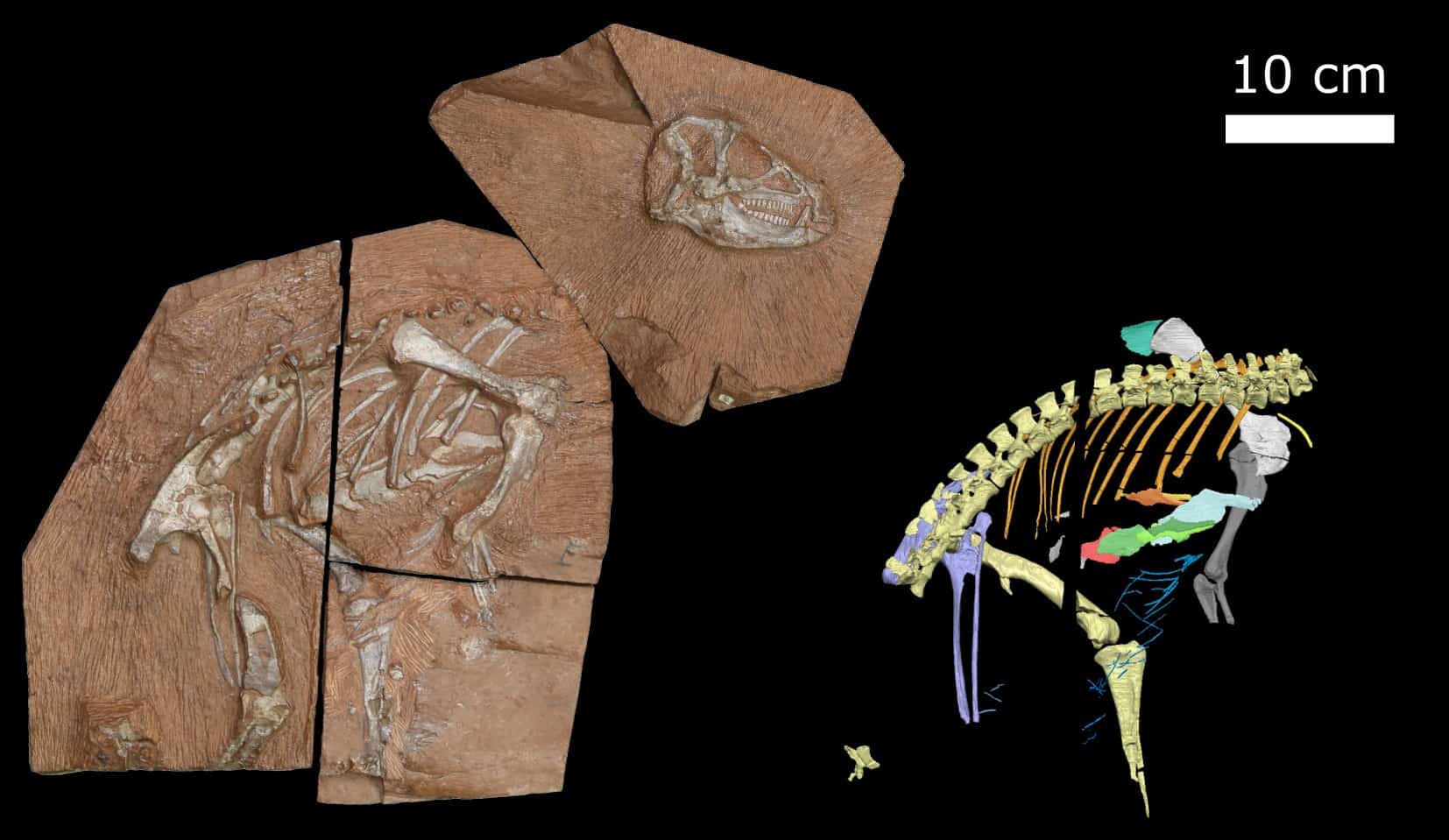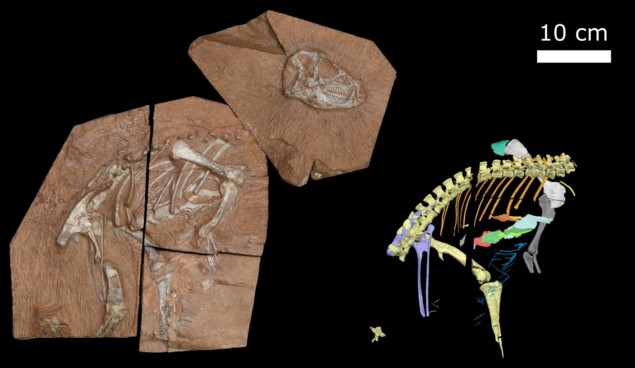Now, an international team of researchers has gained important insights into dinosaur breathing by using light from the European Synchrotron Radiation Source (ESRF) to scan the entire fossilized body of Heterodontosaurus tucki — which was a small plant-eating dinosaur.
Discovered in the Eastern Cape region of South Africa, the specimen is one of the most complete dinosaur fossils ever found. Using data from the ESRF, the team was able to work out how the dinosaur breathed. Scientists had assumed that all dinosaurs had lungs that functioned like those of birds. However, this study shows that Heterodontosaurus used a different mechanism. The creature had paddle-shaped ribs and small, toothpick-like bones, and it expanded both its chest and belly in order to breathe.
Breathing advantage
Heterodontosaurus was an early member of an evolutionary-successful group of dinosaurs that included triceratops, stegosaurus and duckbilled dinosaurs. The researchers believe that this new way of breathing may have given them an advantage over other dinosaurs.
The study is described in eLife.
One thing that I do miss from the North American summers of my youth are fireflies. Although I have never witnessed the phenomenon firsthand, large swarms of fireflies sometimes flash on and off in unison – a behaviour that has long puzzled biologists.
Now Raphaël Sarfati and colleagues at the University of Colorado have observed fireflies in Tennessee at the height of the mating season to try to understand why this synchronized flashing occurs.
They collected video using two 360°cameras to observe swarms of fireflies over several nights. They observed flashing at a frequency of about 2 Hz and in bursts that last 10–20 s. They found that the flashing switches on when the swarm reaches a certain density of insects.
The flashing is done by the males and the team concluded that the fireflies coordinate their flashing with both nearby and distant peers. They also found that the shape and size of flashing swarms is determined in part by local terrain, suggesting that the fireflies must be able to see each other to coordinate their flashing.
Their study is described in Science Advances.

